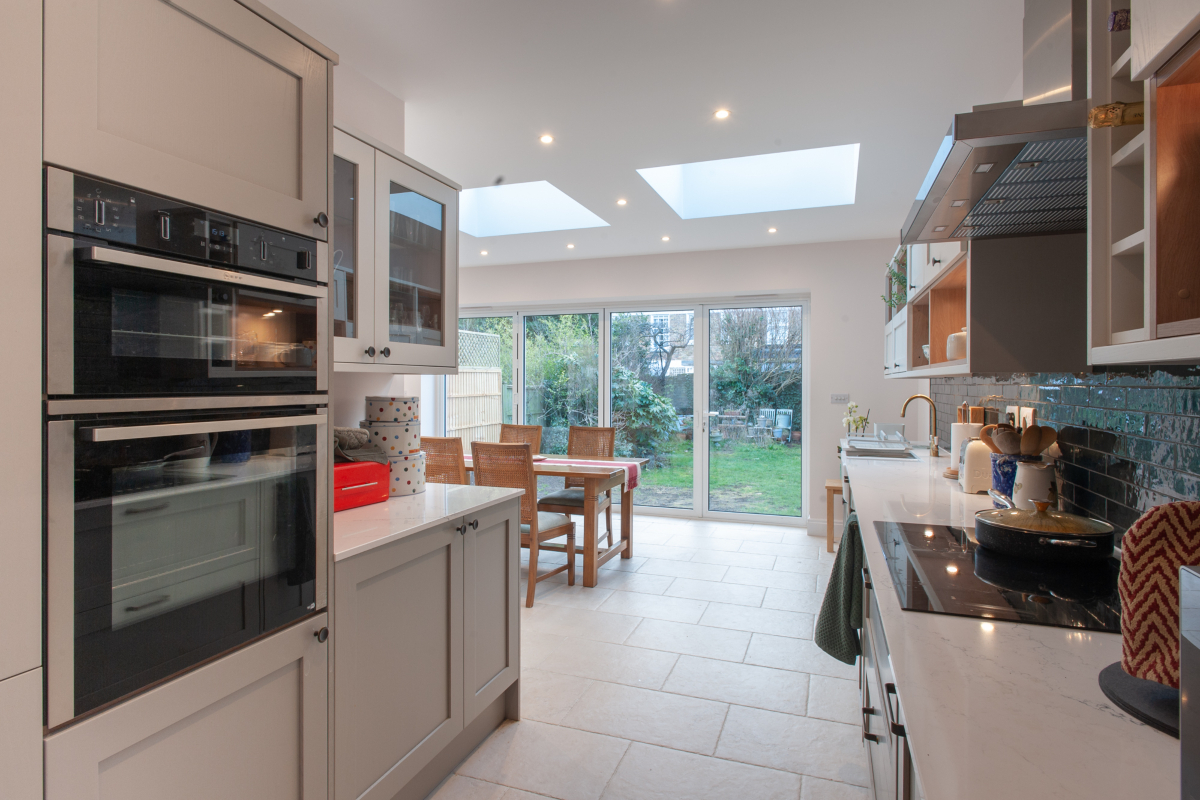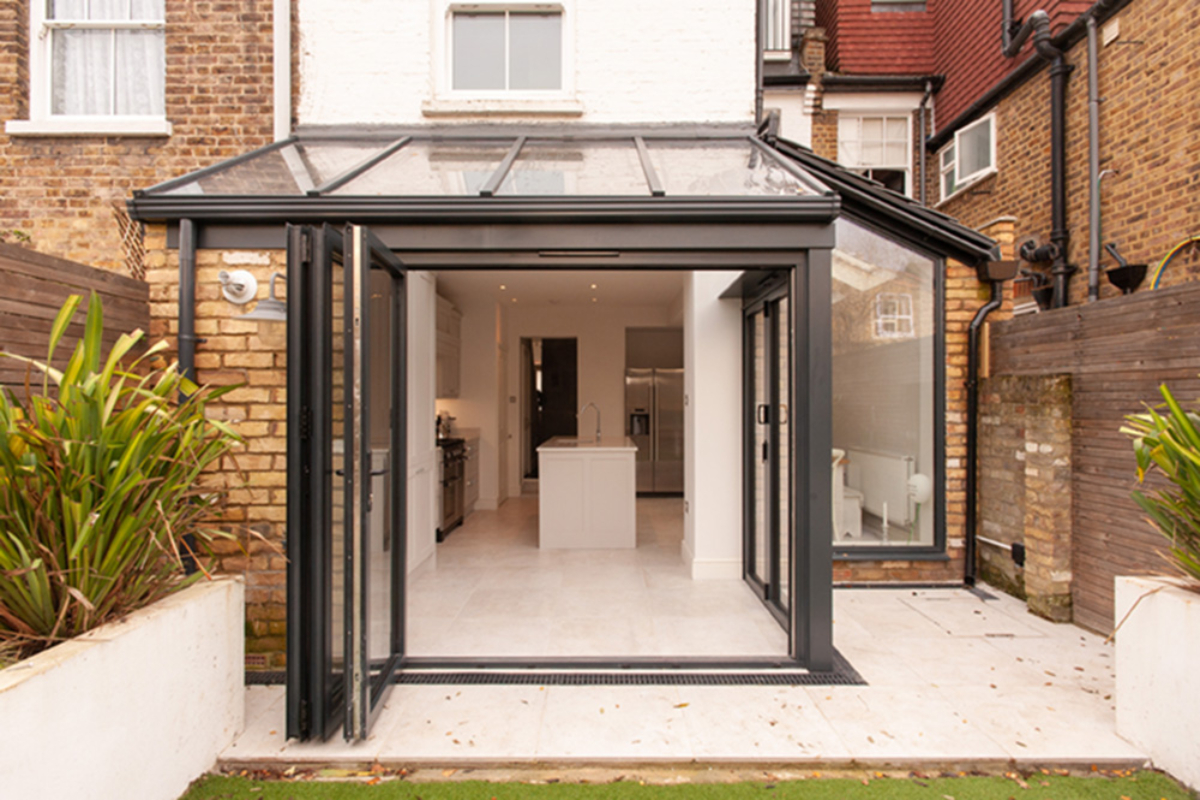Consistently ranked as the most popular type of home in the UK, semi-detached properties are a common sight in every neighbourhood.
Offering the perfect balance between privacy and affordability, semi-detached homes are a great investment.
And best all? Semi-detached properties provide homeowners with a wonderful scope for extending, making the property even more valued and coveted.
Curious to know more? Read on below!
What is a house extension?

Simply put, a house extension is the best way to expand your living space without incurring the heavy cost and inconvenience of moving houses.
A house extension is often viewed as the ultimate form of home improvement, that can help transform any space into a newly-designed, modern expansion that beautifully integrates with the existing structure.
What is meant by a semi-detached house extension?

A semi-detached house is a type of residential property that shares a common wall with an adjacent house. These houses are typically mirror images of each other, with one side being a reflection of the other. A semi-detached house extension refers to the process of expanding or adding extra living space to one side of a semi-detached home.
This generally involves designing and constructing additional rooms or spaces, such as bedrooms, bathrooms, living areas, or kitchen extensions, to the existing structure of the semi-detached house. The extension can be built on the side of the house, or either at the rear or front, depending on the local regulations and the layout of the property.
What are the different types of semi-detached extensions?

Due to their unique arrangement, semi-detached homes allow for many different types of extensions that include:
Single storey extensions –
Built at the rear, front, or side of the property, these single levels of extra space are extremely versatile and may be used to create a larger kitchen, a home office, or even a back porch.
Double-storey extensions –
Though more complex than single-storey extensions, building two levels means substantially more space, allowing for multiple new rooms on both floors, potentially adding bedrooms, bathrooms, or larger living spaces.
Side extensions –
These involve extending the width of the house by building new rooms on the side, creating more spacious rooms or accommodating new functional areas.
Wrap-around extensions –
These essentially combine a rear extension with a side extension, encircling a portion of the house and significantly increasing its overall living space.
Garage conversions –
Garage conversions are a great way to renew existing space, integrate it into the layout of the house, and create new space and dimension in a home.
Loft conversions –
A cost-effective solution to convert unused space upstairs into more functional living space, loft conversions are ideal for adding space and value to your home. The versatility of loft conversions allows homeowners to create unique designs perfect for fulfilling space requirements.
All these extensions offer a practical solution to make the most of available space and tailor the house to the evolving needs of the homeowners, while also potentially transforming the overall look and feel of the property.
What are the benefits of adding a semi-detached extension to your home?

Semi-detached extensions provide several incredible advantages which include:
- Extensions are a great way to create more space for a growing family
- It is an excellent way to brighten up your home and bring in some natural light
- It will save you the cost and stress of moving!
- Any extension, if done right, will add incredible value to the property
This means that by adding more room to your home, you are not only able to design and create a tailor-made space that is perfectly in sync with your needs and contemporary lifestyle, but in doing so, you are also able to significantly increase the market value of your property (especially if you want to resell in the future).
What are some of the key factors to consider when undertaking a semi-detached home extension?

While the advantages are obvious, in order to make the extension a truly worthy investment, there are some important factors to consider. These include:
Local building regulations, permits, and legal requisites
The requirement for planning permission for a semi-detached extension build depends largely on the design and dimensions of the build. More often than not, if the extension falls under permitted developments, planning permission is not required.
However, permitted developments have specific criteria and limitations which must be adhered to, such as:
- Extensions must not take up more than half the land around the original house
- Extensions cannot be higher than the highest part of the existing roof
- Materials used for the exterior of the extension must be similar in appearance to that of the exterior of the original house
- Side extensions can only be single-storied and cannot exceed more than half the width of the original house
- Single-storey rear extensions must not project more than 4m beyond the rear wall of the original house
Permitted developments do not include:
- Extensions constructed on homes located in conservation areas
- Extensions that do not meet the specific size and height limitations
These extensions will require planning permission.
The process of applying for and securing planning permission may take up to eight weeks depending on the complexity of the extension. The application requires detailed diagrams of the proposed extension including structural calculations.
In addition to planning permission, building regulations approval and party wall agreements must also be considered. The planning portal provides a more comprehensive understanding of the specifications involved with permitted developments and planning permission.
Architectural design and structural cohesion with the original house
Naturally, a large part of getting approval from the local building authority for a semi-detached extension is dependent on the suitability of the extension to the existing house and property. This essentially involves determining how the extension will be connected to the original house, the architectural style of the extension, and the building materials that will be used.
Functionality of the newly-created space
How the new space will be utilised is another important factor. This helps define its style, as well as the fitting and furnishings required.
Floor plan
In order to optimise the potential of the extension and design a space-efficient room, it is vital to make decisions regarding its floor plan early on. For example, finalising the placement of devices, switches, and even sinks can help determine how the utilities are connected. Other important considerations include:
- Optimising the natural light that enters through well-placed windows
- Converting awkward corners into useful storage spaces with the addition of shelves
- Arranging furniture and stairways to match the headroom for each area
- Adding feature walls to highlight design features and add more depth
Budget
While costs may seem daunting, weigh them against the future value and comfort your extended home will bring. At the same time, it is important to set realistic costs and project timelines. We advise allowing around 5% above the estimate as a contingency fund.
Asking the experts
Consulting professionals is key. Architects and builders are your allies in crafting your dream space. They ensure your vision aligns with local regulations and structural integrity. Therefore, finding someone who you feel comfortable to approach and share your ideas with is crucial to the success of the project.
How much does a semi-detached extension cost?

When planning and designing a semi-detached home extension, it is crucial to consider the cost of the extension. And while most semi-detached home extensions can range in cost between £35,000 to £130,000; this value is dependent on several factors such as:
- The type of extension
- The size of the extension
- Location
- Groundwork
- Building materials
- Fittings and fixtures
- Specialists’ fees, etc.
And since most semi-detached extensions have the potential to increase the value of a property by 10-20%, the cost of the extension should ideally be well below this estimate. Working with professionals to get an accurate quotation also helps.
All of this results in an investment in space that ultimately pays dividends in comfort and potential property value.
Semi-detached home extension ideas

Semi-detached extensions offer a myriad of options and interesting possibilities in how they are utilised. Depending on the type of extension created, their use is usually only limited by the amount of space created within its integration with the rest of the structure.
Some timeless and innovative ideas for the newly-created extension include:
- Kitchen extension
- Extra bedroom (with an en-suite bathroom)
- Home office
- Playroom
- Home library / Reading nook
- Dining area
- Open-plan living space
- Front/ rear porch
- Home gym
- Gaming room
- Craft area
Conclusion
It happens to us all at some point in time; we outgrow our living spaces. It is natural and inevitable. But its consequences need not be expensive and inconvenient.
House extensions offer the ideal solution to expanding your living space without uprooting your life. What’s more? They also provide more scope for bespoke designs that perfectly align with your needs and lifestyle.
The extensions aren’t just about adding rooms; they’re about expanding your potential and realising the vision of your dream home. So, whether it’s a cosy single-storey or an ambitious wrap-around, let the possibility of a semi-detached extension be a testament to your home’s capacity to evolve, just like you do. Embrace the expansion, and watch your space grow beautifully.
Eager to expand, but not sure where to start? Get in touch with us, get inspired, and begin your journey towards your dream home today!
Looking for some inspiration? Check out our completed projects for the incredible stories and visions that we have brought to life.




